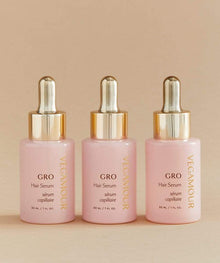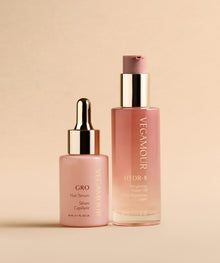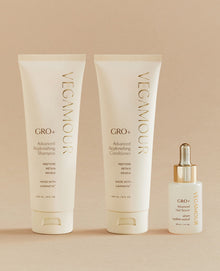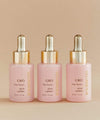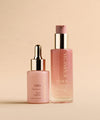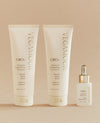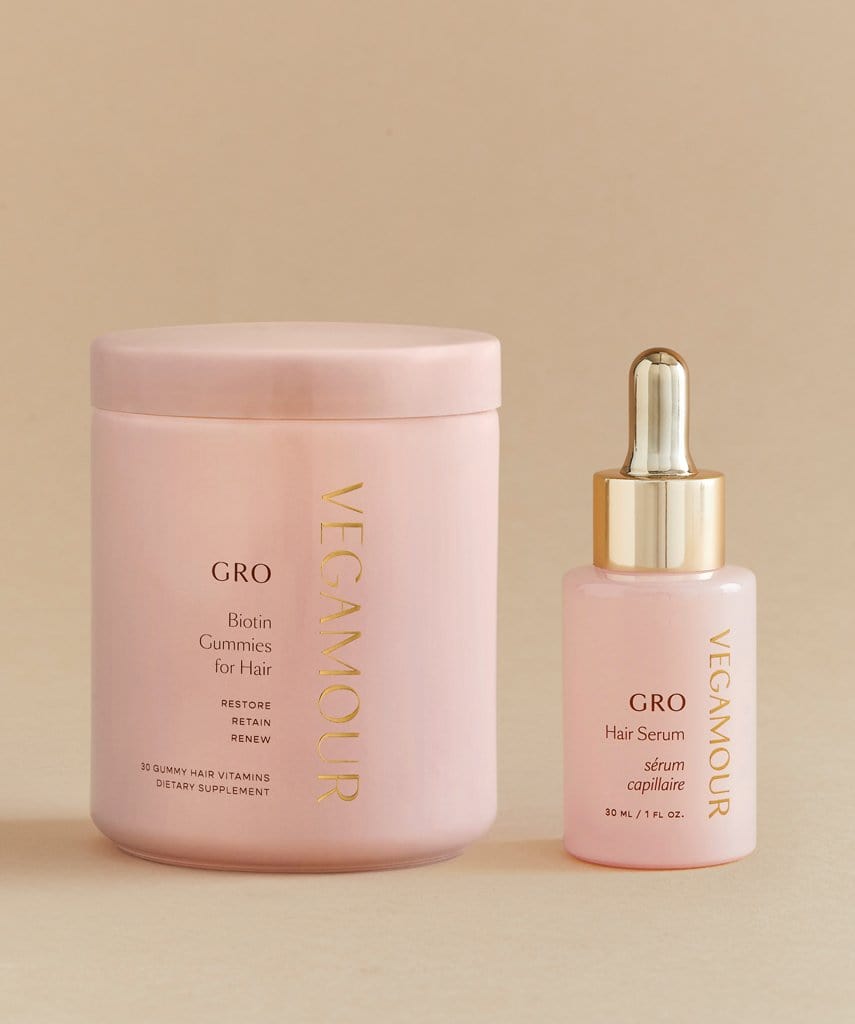What You Should Know About PRP for Hair Loss
Hair loss is a fact of life for many people. Studies show that androgenetic alopecia (a common hair loss disorder) affects approximately 50 million men and 30 million women in the U.S. Plus, other hair loss conditions, including alopecia areata and certain illnesses, can cause hair loss as well.
Fortunately, physicians have gone to great lengths to develop hair restoration techniques to counter the effects of alopecia. One such treatment, known as platelet-rich plasma — or PRP — has gained traction in recent years and shows potential as a safe, effective treatment for hair loss. Plus, learn more about safe, natural products you can use to combat thinning hair at home.
What Is PRP?
Human blood contains red blood cells, white blood cells, plasma and platelets, according to Dr. Clara Yu, founder of Beauty Cult. The plasma is the liquid portion, and the red and white blood cells and the platelets are suspended in it. In the 1970s, doctors coined the term PRP (or platelet-rich plasma) to describe blood with a relatively high number of platelets.
At first, PRP was used to treat patients with low platelet counts. (Platelets stop bleeding by helping blood to clot.) Eventually, doctors in different fields found uses for PRP, from surgery to sports medicine. Later, it gained popularity in cosmetic dermatology before being considered as a potential therapy for alopecia.
PRP Injections for Hair Restoration
The Food and Drug Administration has approved many treatments for hair loss. However, they are not effective for everyone, and some have adverse side effects. Dr. Yu points out that many people are seeking out natural treatments for alopecia instead. Since PRP injections use the patient’s own blood, they are thought to be a more natural option.
Shop: GRO+ Advanced AGELESS Daily Duo
How PRP Works
From start to finish, a PRP therapy treatment takes about one hour. But all visits involve the same basic experience:
- The process begins with the doctor cleaning the patient’s scalp and applying a topical numbing cream.
- While the anesthetic takes effect on the scalp, blood is drawn, usually from the patient’s arm.
- A test tube with the patient's blood is placed in a centrifuge (a medical machine that spins the sample) for about 5-10 minutes. This separates the blood into layers: red blood cells, platelet-poor plasma and platelet-rich plasma.
- The doctor uses a syringe to inject only the platelet-rich plasma into the scalp at the follicle level.
Studies show these injections have increased hair count and density in patients with both androgenetic alopecia and alopecia areata. "Platelet-rich plasma has a lot of growth factors in there that usually aids in wound healing," said Dr. Yu. "So, it is thought that the growth factors can help bring blood supply to the hair follicle that will help strengthen the follicle. And also, it can help reactivate any dormant hair follicles.” Other researchers believe that the growth factors found in platelets may act on stem cells in the bulge area of hair follicles, which stimulates new follicles and blood vessels to develop.
Shop: Best-Selling Products for Thinning Hair
Benefits of PRP Therapy for Hair Growth
Proponents of PRP therapy state that it increases blood supply to hair follicles and increases hair thickness. However, researchers point out that while PRP has sufficient evidence to support its use in hair restoration, the procedure is still in its infancy.
A study conducted in 2013 focused on 11 men with male pattern baldness (also known as androgenetic alopecia) who had not responded to other hair loss medications for six months. Results showed a significant reduction in hair loss and moderate improvement in hair volume for these men. Patients indicated a high level of satisfaction and low side effects, which included minimal pain, redness and pinpoint bleeding at the injection site.
Since PRP therapy uses blood from your own body, negative side effects have been minimal for most patients. Localized swelling and transient pain were reported as the only adverse reactions in a 2018 study. Johns Hopkins notes patients may experience soreness around the treatment area for two to three days, which can be eased by taking acetaminophen. However, most people need no recovery time and can resume their normal activities immediately following treatment.
Research conducted from 2012 to 2013 concluded that PRP injections could be a good option for patients who experience negative side effects (or no results) from other common hair loss treatments or who cannot take those treatments for medical reasons.
Also: How to Make and Use Rice Water for Hair Growth
The Risks of PRP Therapy
While PRP research has reported minimal side effects, it is not a cure for hair loss. Treatments must be performed regularly at first and then at intervals to maintain hair regrowth. For example, a patient may get three monthly PRP treatments and then return twice a year for maintenance treatments. Keep in mind that scheduling the hourlong procedure at regular intervals may cause more inconvenience than at-home treatments would.
Another potential downside to PRP depends on your bottom line. Since most insurance plans see PRP therapy as a cosmetic procedure, you are likely to pay the full amount of treatment out of pocket. While the price varies between medical practices and based on the centrifuge being used, each treatment can cost anywhere from $500-$600, according to Dr. Yu. Be sure to check with your insurance provider in advance of treatment to see if they cover any costs.
While PRP is a natural treatment, it carries the same risks as other injections. For example, infection, injury to blood vessels and nerves, scar tissue and calcification can occur. Each patient should discuss any concerns about the process with their doctor before deciding on treatment.
It’s also important to note that PRP injections are not for everyone. Your doctor should take your full medical history into account before recommending them as a treatment option for hair loss. Factors include:
- Known intolerance to anesthetics
- Any prescription or over-the-counter medications you're taking, especially ones that prolong bleeding like aspirin or blood thinners.
- A history of heavy smoking or drug use
- Medical conditions that could disqualify you from PRP, including autoimmune disorders, hematologic disorders, platelet dysfunction syndromes and skin conditions affecting the scalp.
Also: 5 Benefits of Scalp Massage (Including Hair Growth!)
Affordable Alternatives to PRP
Are you interested in a natural solution to your hair struggles but don't feel excited at the thought of a PRP injection or the price tag? Not to worry — there are other natural ways to improve hair health. Here are some to consider.
GRO Hair Serum
This plant-based serum visibly increases hair density without toxic chemicals or harmful side effects. It's a vegan, cruelty-free alternative to PRP that can easily be done at home and for a lower cost.
Treat Yourself to a Massage
Stimulate your scalp with a revitalizing scalp massager that boosts scalp health and can even be used to work in GRO Hair Serum. It's safe to use on all hair types and on wet or dry hair.
Say Goodbye to Stress
Physical and emotional stress can interrupt your body's normal hair growth process, causing follicles to enter the resting phase early and increasing hair loss. Reduce stress levels and give your locks the chance to thrive by getting enough sleep, exercising regularly and staying hydrated.
Read: I Tried CBD Hair Serum — Here's What Happened
Eat a Balanced Diet
Hair wellness is a reflection of overall wellness. Make sure you're eating enough calories and getting essential nutrients from your diet, like protein, iron, zinc and vitamins. This can minimize the likelihood of hair loss while improving your overall health.
See a Dermatologist
There are several different causes of hair loss. If you've tried to solve the problem on your own with no luck, it may be time to see a dermatologist who can help you understand exactly why you're losing hair and provide specific recommendations.
More From VEGAMOUR
- Does Onion Juice Help Hair Grow?
- What Is Anagen Effluvium?
- 10 Things to Avoid When Growing Your Hair
- Why Some People Experience Hair Loss After Surgery
Photo credit: dimid_86/iStock

